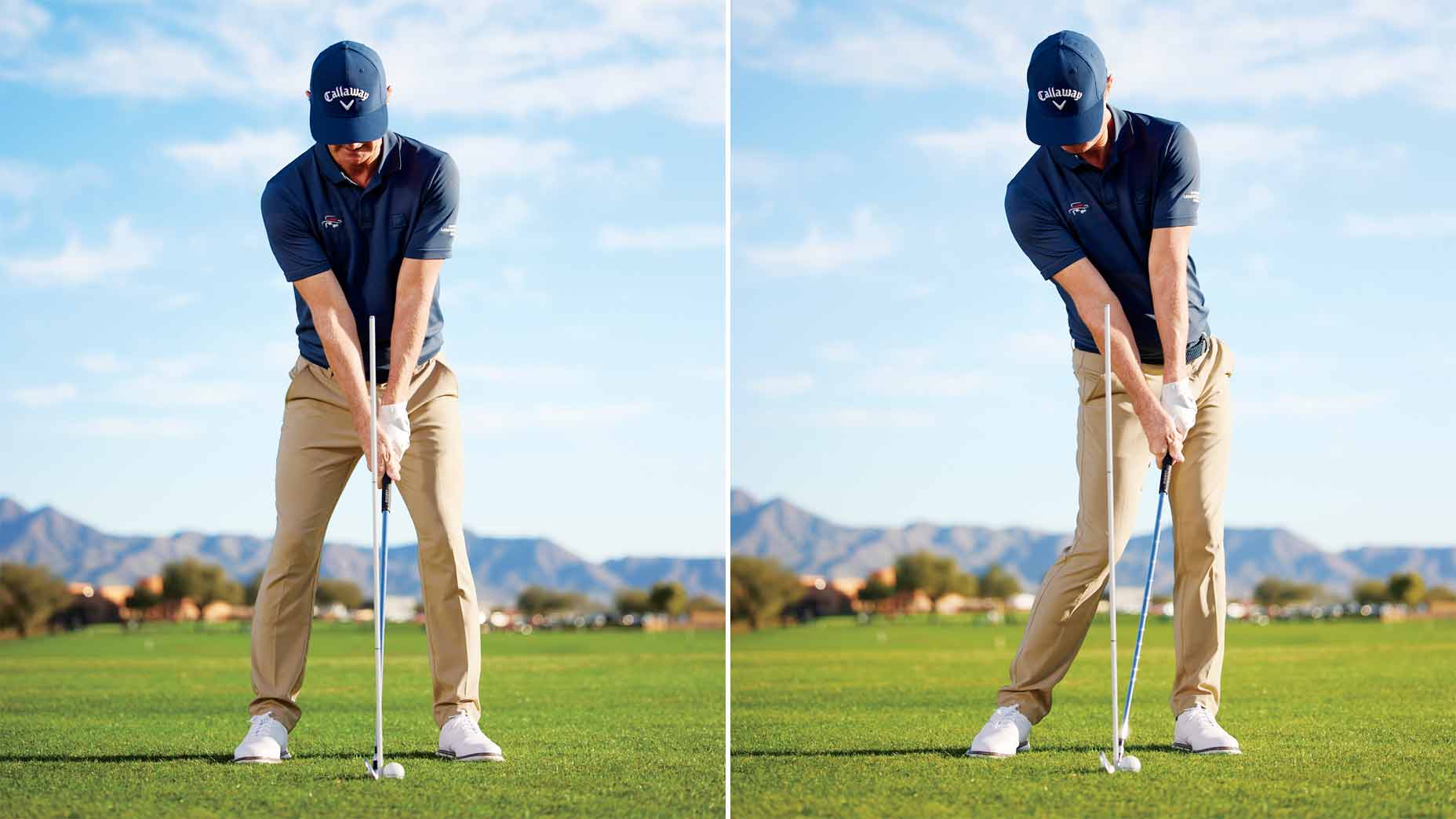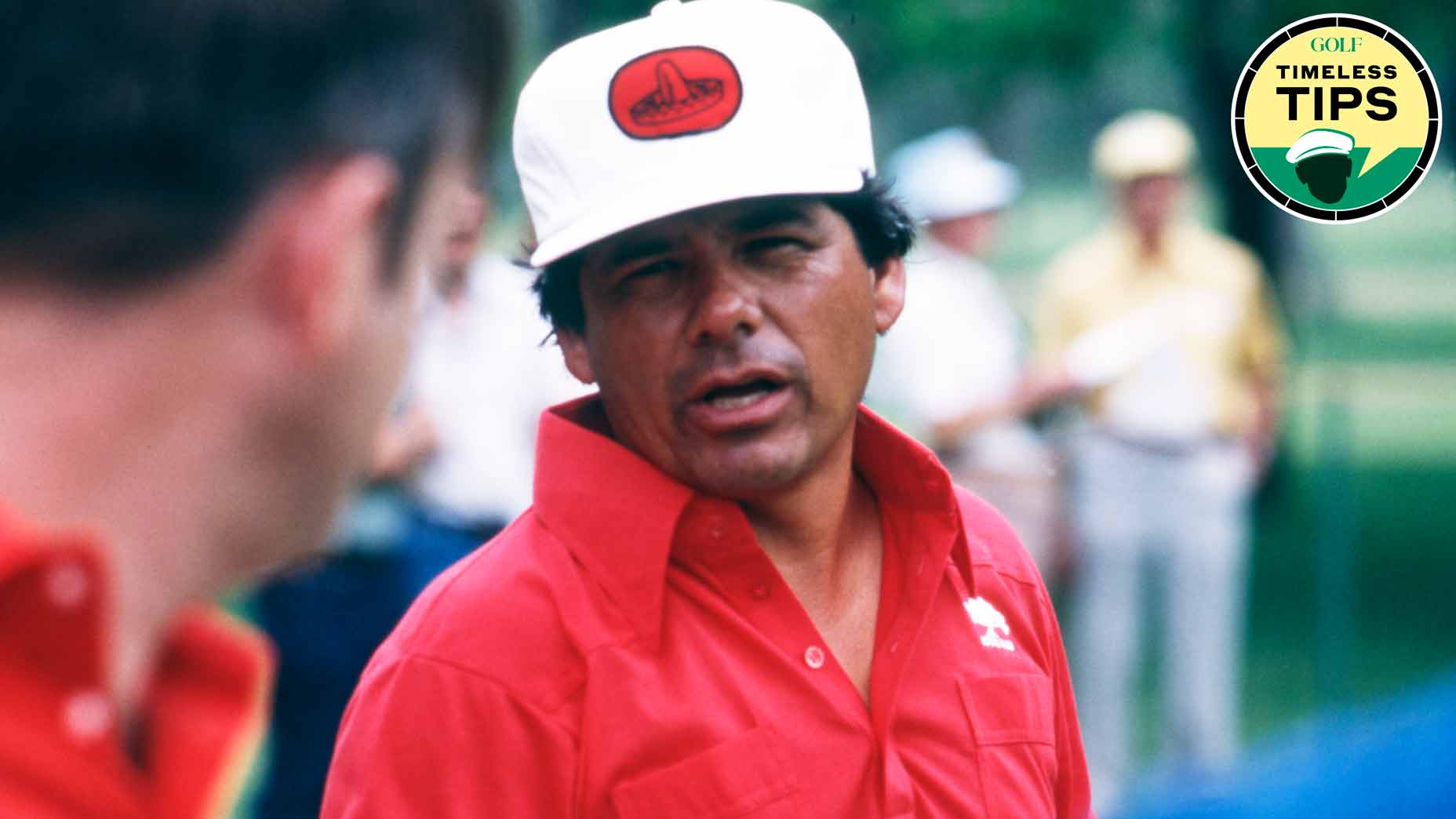 This clubface hack is a quick-fix for those infuriating mishits
This clubface hack is a quick-fix for those infuriating mishits
This simple Cheat Sheet will show you how to analyze your divots to fix your swing
Analyzing your divots from a practice session is like evaluating a crime scene: There are clues in the turf that indicate flaws or mistakes at impact that lead to less-than-desirable shots.
Looking at these clues under a magnifying glass can quickly improve your contact. During a lesson I’ll often draw a white line on the turf with spray paint and ask my student to place a ball on top of the line and hit some shots. Through the course of this exercise, divots appear, and a pattern begins to develop.
RELATED: The Hottest Training Aid on Tour could help your swing
I use the location, depth and direction of the divots to start my analysis of my student’s impact. The ideal location of the divots should start on the white line and move forward toward the target. The divots should be relatively square with the same shallow depth from start to finish.
Ideal divots are a rarity at first. A lot of recreational players start their divots behind or in front of the line. They point too far left or right. Sometimes they’re very deep and other times the club never touches the ground.
By analyzing the divot pattern in reference to the white line, you can start to form your corrections to improve your ball flight. CSI isn’t just reserved for crime scenes. Learning from the clues left behind at impact can solve your iron problems for good.
ADVERTISEMENT

1. In Front Of The Line
This divot looks just right, but if you find your divot is too far in front of the line, the ball could be too far forward in your stance; the club swung too much from the inside; your body was slow to turn through or you released the club early.
This cheat sheet will tell you whether your ball position is messing up your golf swing
2. Behind The Line
The ball is too far back in your stance; the club swung too much from the outside; your body turned through too quickly; your hands were late to release.
3. Too Deep (Or No Divot)
If it’s deep like this, your downswing is too steep, or your body is dipping toward the ball. If you don’t have any divot at all your swing is too shallow, or you’re pulling up through the shot.
4. Too Far Right Or Left
This could simply be an aiming problem (you’re pointed left or right of the target at address) or you exaggerated your swing path in one direction or the other.
ADVERTISEMENT






